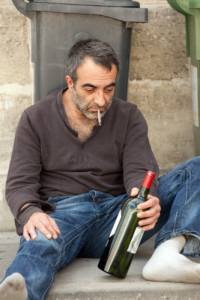 Most substance abuse professionals do not believe that addicts can drink in moderation and stay on their path of a healthy drug- or alcohol-free lifestyle. Abstinence is the only way to continue to be addiction-free. One of the highest rates of relapse was reported in a recent study of opiate users. The researchers found that a staggering 79 percent relapsed in the first 90 days of their sobriety.
Most substance abuse professionals do not believe that addicts can drink in moderation and stay on their path of a healthy drug- or alcohol-free lifestyle. Abstinence is the only way to continue to be addiction-free. One of the highest rates of relapse was reported in a recent study of opiate users. The researchers found that a staggering 79 percent relapsed in the first 90 days of their sobriety.
Goal of Extended Treatment
The goal of the extended care rehabilitation (rehab) counselor is to help the addict understand and identify the reasons for the addictions. This is typically done in group sessions where the patient can talk and share his or her experiences within the group. However, individual counseling may be required if there are psychological reasons for the addiction.
Length of the Program
Extended care programs can last anywhere from 30, 60, and 90 days, depending on the type of addictions and how long the patient has been using drugs and/or alcohol. This is determined by trained addiction specialists in the early stages of treatment. These counselors are trained to work closely with others besides the patients to include close family members, friends, and doctors, so they can put a plan together specifically for the patient.
Usually, the counseling sessions will take place on a daily basis and will decrease over time, depending on the how the patient is doing. When a person is showing signs of relapse, an emergency session may be required on top of regular counseling to help the addict take back control of their treatment so they are not at risk of losing all the help achieved so far.
People Who Should Attend
For many addicts, the traditional week-long program may not be enough for their drug or alcohol addictions. Extended treatments programs were implemented for the struggling addicts who do not respond to the weekly program. This form of treatment is originally designed for people that have jobs in public safety, so they would have enough addiction recovery before they returned to their work.
People like police, pilots, firefighters, and bus drivers all benefit from this type of rehab, which was not traditionally covered under their regular health insurance policies. Currently, this option is available to all drug and alcohol addicts who need that extra time for recovery.
Sober Living Environments
Sober living environments (SLEs) or halfway houses are intended as another option for those suffering from drug or alcohol addiction and who need just a bit more care but with less supervision. At one of these facilities, the addict must still attend the group or peer counseling. By bringing together the addicts that have been discharged from the traditional treatment programs to these homes, these people are still able to get support for their particular addiction.
SLEs and halfway houses are usually owned by an individual with the desire to help those recovering, and these units have substance abuse counselors on site. Most of the sober living homes specialize in one or two different addictions but cooperate with other programs to bring together addicts of many different addictions.
